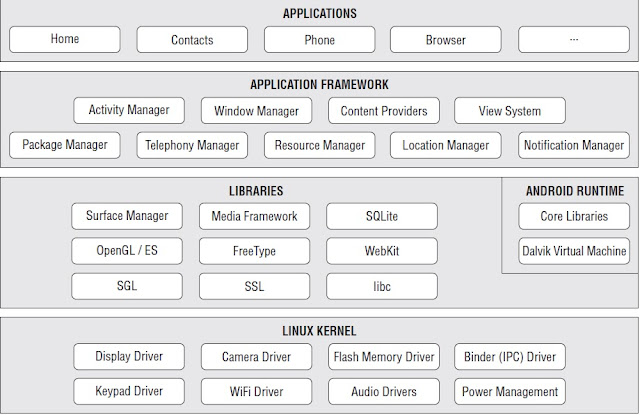Android is a mobile operating system that is based on a modified version of Linux. It was originally
developed by a startup of the same name, Android, Inc. In 2005, as part of its strategy to enter the
mobile space, Google purchased Android and took over its development work (as well as its development team).
Google wanted Android to be open and free; hence, most of the Android code was released under
the open-source Apache License, which means that anyone who wants to use Android can do so by
downloading the full Android source code. Moreover, vendors (typically hardware manufacturers)
can add their own proprietary extensions to Android and customize Android to differentiate their
products from others. This simple development model makes Android very attractive and has thus
piqued the interest of many vendors. This has been especially true for companies affected by the phenomenon
of Apple’s iPhone, a hugely successful product that revolutionized the smartphone industry.
Such companies include Motorola and Sony Ericsson, which for many years have been developing
their own mobile operating systems. When the iPhone was launched, many of these manufacturers
had to scramble to find new ways of revitalizing their products. These manufacturers see Android as
a solution — they will continue to design their own hardware and use Android as the operating system
that powers it.
The main advantage of adopting Android is that it offers a unified approach to application development.
Developers need only develop for Android, and their applications should be able to run on numerous
different devices, as long as the devices are powered using Android. In the world of smartphones, applications are the most important part of the success chain. Device manufacturers therefore see Android as their best hope to challenge the onslaught of the iPhone, which already commands a large base of applications.
Android Versions
Android has gone through quite a number of updates since its first release. Table 1-1 shows the various
versions of Android and their codenames.
Tab le 1-1: A Brief History of Android Versions
Android Version ReleaseDate Codename
1.1 9 February 2009 -
1.5 30 April 2009 Cupcake
1.6 15 September 2009 Donut
2.0/2.1 26 October 2009 Eclair
2.2 20 May 2010 Froyo
2.3 6 December 2010 Gingerbread
3.0 Unconfirmed at the time of writing Honeycomb
4.0 November 14, 2011
IceCream Sandwich
4.1
June 27, 2012
Jelly Bean
